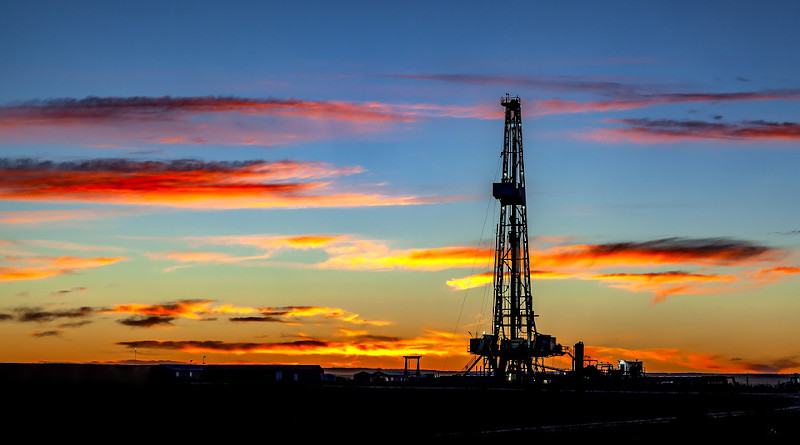Somalia does not currently produce any oil or gas. It relies on imported petroleum products. The country does not have operational refineries. There was once a refinery in Mogadishu, but like anything Somali, it collapsed with the state in 1991. Power plants operate on imported diesel, although the country has a high solar and wind potential. Lack of a national grid infrastructure keep it hooked to imported fuels. These include gasolene, diesel, jet fuel, LPG and bitumen to power its vehicles on the roads, aviation, generators and construction, indeed, almost everything.
There is, however, an ongoing exploration of petroleum offshore and this is expected to change the country petroleum landscape in the medium term. Until then, Somalia is expected to remain fuel import dependent. Investing in renewable energy could help reduce that dependence and improve power stability but old habits are difficult to break and especially when there are other more important needs on the table – weak security, political instability and an unknown and uncertain future.
Current Exploration Activities
Wars in the region or vicinity, in addition to its own internal idiosyncrasies, weigh heavily on the country. However, one can visualize its future petroleum page briefly with respect to the current offshore exploration. There are reports that Türkiye’s Oruc Reis vessel has wrapped up its 3D surveys offshore last month, May 2025. Drilling is expected to start later in the year 2025 with first oil production in the country by early 2026. Offshore prospects are reported to be about 30 billion barrels (Source: Hiiran.org, Primaryvision.co and reddit.com).
Türkiye’s TPAO holds exclusive exploration rights across three offshore and multiple onshore blocks of about 31, 000 sq. km., which allows it to retain 90% of the revenue to recover its costs and risks in the initial years. The Somali federal Government is also reported to have signed with Azerbaijan an MoU with respect to expertise in oil and gas. American and other firms still hold legacy concessions from the collapsed state of 1991. They include among others, ExxonMobil, Shell, ConocoPhillips, and others. (Source: reddit.com, primaryvision.co and energyinafrica.com).
Petroleum Revenue Management
Somalia owns a Petroleum Law, which it passed in 2020. It provides the legal basis for the current exploration and revenue sharing arrangements. It also has the Somali Petroleum Authority (“SPA”) which oversees regulation of the country’s petroleum industry along with the Ministry of Petroleum and Mineral resources, which negotiates deals with respect to the industry.
A production sharing agreement model is in place whereas the government gets a production after costs of between 10 to 20 per cent in the initial years with increases over time as international companies recover their investments costs. There are reports that such sharing arrangements in the long run may be 70/30 percent for Somalia and international companies respectively.
Challenges
Currently, there are proforma arrangements between the federal government and its member states. A 2018 agreement proposed a 55/45 per cent sharing between federal and member state split of Somalia’s revenues respectively, but this remains incomplete. There is a chance that member states may want more in the long run. How this will be implemented is yet to be determined with the current political impasse between the member states and the federal government. Obviously, this represents one of the weaknesses of the federal structure which was imposed on the nation to weaken it and keep its regions at each other’s throats, perhaps, all the time.
An important issue which needs to be always kept in mind is also the country’s poor status when it comes to transparency indices. The federal infrastructure is by nature a corrupt system and would need to be replaced sooner than later. How that will happen is anybody’s guess. But there are suggestions for a Transitional Somali Technocrat Council to replace the current dysfunctional federal structure and build state institutions within three years.
The Key Needs of the Country
Somalia will need to revisit the issue of resource management and put in place a proper revenue management law which not only protects the country’s share of resource revenues vis a vis foreign partners, mostly international oil companies but also within the country, such that the resource does not become a curse instead of a blessing. This will, of course, require the building of a robust oversight body such as the Somali Petroleum Authority (”SPA”) would represent. It may have to include civil society, and local communities (elders and other prominent personalities in the country) in the decision-making processes with respect to revenue management law.
Conclusion
Somalia is on the verge of a potentially transformative energy transition. With offshore seismic surveys complete and drilling expected by late 2025, the country could enter the ranks of oil-producing nations. However, this opportunity also faces significant risks including, among others, governance fragility, infrastructure gaps, and geopolitical tensions. The current West Asia War with the involvement of major powers, may disrupt the current process, delaying it again until better times show up. This war may, on the contrary, also accelerate the drilling of Somali offshore oil to replace any disruptions of West Asian oil supplies, which may be complemented by production of other countries like Mozambique, Tanzania, and other Africa states.
Somalia’s energy future hinges not just on oil or gas discoveries. Its currently dysfunctional federal governance, poor infrastructures and public trust, will also play major roles in proper and efficient utilization of these resources. The country will need better transportation policies and smarter contracts to be complimented by investing in renewable energies. They will all play positively in turning Somalia from a poor nation to a prosperous country.

